"A Diamond Is Forever", The Slogan Of A Century
De Beers, The Monopolistic Market Manipulation Mufasa
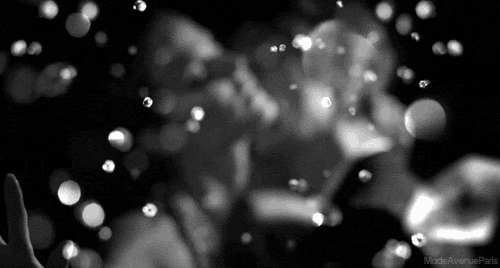
This Story Of A Beautiful Business Venture Takes Us Back Over A Century...
Many customs that have become well known societal values of today actually don't have a history dating too far back, hell even most marriages themselves were actually prearranged up until about the mid 20th century in the United States. A fair bit has changed since the first and second industrial revolutions when the international power began to rapidly transition from the hands of the royalty into the firm grasp of the business savvy elite throughout the globe. One of these new beautifully crafted transitions was the introduction in the early 1900’s to the tradition know as the engagement ring.
Disclaimer Now let me state right off the bat I'm not opposed to diamond engagement rings or diamond rings in general, to each their own. Will I buy one to propose, chances are good yes. I’m merely speaking into a topic that I find fascinating, one of the greatest business ventures ever undertaken since the industrial revolution. Also if you dont feel like reading the article check out the video at the bottom, its like four minutes and the Adam Ruins Everything series is pretty awesome.
The diamond industry creation is actually a relatively new invention. Back in the late nineteenth century there were actually a relatively small amount of diamond mines throughout the world. India and Brazil both had diamond mines in operation but given a whole year were producing, and introducing to the international market, a few mere pounds annually. This resulted in the creation of the artificial reality of scarcity driven by the simple lack of availability, times weren’t terrible. In 1870 however, massive diamond mines were discovered in South Africa near the Orange river. At this point everything changed, as diamonds were now being mined by the ton the initial investors realized that they were about to lose the profit on their investment, what to do what to do. Diamonds have little intrinsic value, if they lost their scarcity factor why would people continue to buy at an overvalued price? Something needed to be done, the stage was set and thus one of the most beautiful illusions of the twentieth century began.
The Start Of A Global Takeover
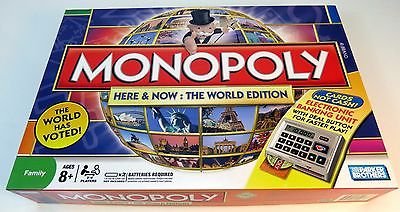
As the investors discussed the proposition of an actual diamond industry, they began to wonder if it was even possible, and if so, how the global plan would eventually come to fruition. The investors came to the conclusion that a single massive global entity was needed in order to be powerful enough to perpetrate their international agenda. This entity would have the sole responsibility of controlling the entire scarcity of diamonds both in front and behind the scenes. This grand all powerful entity created in 1888 was named De Beers consolidated mines Ltd and oh boy did the future ever look bright. De Beers began to spread from continent to continent, always remaining under the radar doing business through a different name. In London they were the Diamond Trading Company, in Israel it was The Syndicate, throughout europe the C.S.O. (Central Selling organization, an arm of the Diamond Trading Company) was born. For the majority of the twentieth century it controlled not only directly, but indirectly as well, all the diamond mines in southern africa and also owned the majority of diamond trading companies throughout Europe. The cartel was so successful that against other commodities diamonds actually looked like a solid steadily growing investment, so much that in the 1970’s speculators began buying diamonds to guard against the fear of inflation and a potential recession.
Introducing The Amazing N.W. Ayer
In September of 1938, Harry Oppenheimer then twenty nine, travelled to New York City to meet with Gerold M Lauck, the president of N.W. Ayer. N.W. Ayer was a leading advertisement agency in the United States and came highly recommended by Morgan bank, the same bank that had helped his father consolidate and control the De Beers financial empire. Diamond prices were tanking world wide and his bankers and advisors knew this. After the depression it seemed very few places around the globe wanted anything to do with a hard piece of shiny old carbon. Germany, Austria, Italy, and Spain had never taken hold of the idea of a diamond engagement ring, England and France aristocrats bought the majority of diamonds in those countries, and as a whole it appeared that Europe was in reality, on the brink of war.This left the United States as the only real possible market to expand into. Most of the diamonds in 1938 were actually shipped to the United States, around three quarters of the international trade, however most were of poorer quality than those being bought back in Europe. It was time for the greatest ongoing advertising campaign in human history.
N.W. Ayer was granted exclusive rights to the project, while Oppenheimer agreed to underwrite the costs of the research that would be used to further his agenda. It was a very generous offer indeed and was quickly accepted. N.W. Ayer then went to work investigating the american diamond market, finding that the amount of diamonds being purchased in the United States had declined by almost 50% while at the same time the quality of the diamonds being purchased had also declined by over 90% they came to the realization that it was time to spur demand, but how. Times were tough in the diamond industry right now, “how can we get people to buy something they don't actually want” was pondered to no end. Since young men were buying the majority of engagement rings, it was crucial that they be included in the advertising as well.. Similarly young woman had to view the engagement ring as the ultimate sign of commitment, romance and love. Ayer strongly believed that this could be achieved through the relatively new form of entertainment known as motion pictures.
Hot Diggity Who Turned Up The Celebrity Appeal?

Movie stars, idolized then as they also are today were given over the top expensive diamond rings to wear as indestructible symbols of their love. Photos were beginning to show up in specifically selected magazines showing an elegant beauty with a glittering gem on her hand. Radio programs were beginning to talk about the “trend towards diamonds” that Ayer planned to start. Even the British Royal family helped out Queen elizabeth herself went on a well documented trip to the South African diamond mines, accepting a diamond from Oppenheimer himself. By 1941 Ayer reported that it had already achieved the increased sale in diamonds by over 55% in the United States showing a total reversal in the previous downward trend.
Ayer noted “ this campaign had required the conception of a new form of advertising which had been widely imitated ever since. There was no direct sale to be mad. There was no brand name to be impressed on the public mind. There was simply an idea, the eternal emotional value surrounding the diamond”.
“We are dealing with a problem in mass psychology”
The #1 Slogan Of The Century
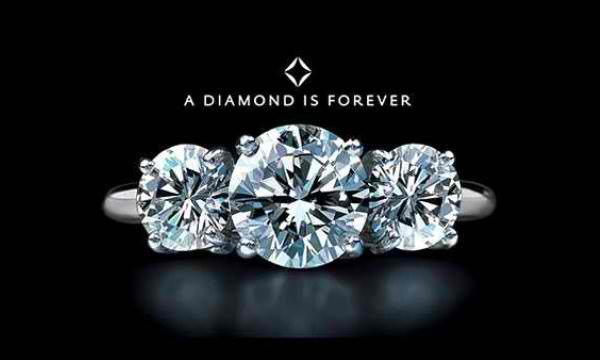
A subtle program was then formed that which created a lecturing program that would then visit various high schools across the country. All of the lectures revolved around diamond engagement rings reaching thousands of girls in the educational institutions. After looking into how pharmaceuticals and diamonds have become monopolized their industries I often wonder if the current and past schooling system is a mere conditioning center. The agency also organized and offered a service called “Hollywood Personalities” which provided 125 leading newspapers with information on the diamond rings celebrities were currently fashionably sporting. The involvement and encouragement to report diamond related news continues to this day. In a 1948 strategy paper it said, “We spread the word of diamonds worn by stars of screen and stage, by wives and daughters of political leaders, by woman who can make the grocer's wife and the mechanics sweetheart say, I wish I had what she has”. The only thing left was a slogan for the diamonds the consolidated and expressed the theme of beauty, romance, luxury, and commitment and thus "A Diamond Is Forever" was born.
Nearing the end of the fifties Ayer reported that their advertisements had a profound psychological effect on the american public. An entirely new generation of boys had grown to become men with the idea that a diamond engagement ring was a necessity when getting married to virtually everyone. The new arising consciousness of the people was coming to the understanding that a material object reflected in a very personal way, a man’s success in life. The campaign had been so successful that individuals who could not afford to buy a diamond before their proposal would actually prefer to defer the purchase rather than forgo it entirely.
SPECIAL MENTION

From 1943 to 1970 Frances Gerety spent her career at the Philadelphia advertising agency working for N.W. Ayer, there she dedicated herself to one client, De Beers. If there was an advertisement coming out of that company during those years she had something to do with it. She wrote all the company’s ads and in 1947 the iconic slogan “A Diamond is Forever” was born. If you’re hoping to give or receive a diamond anytime soon you have the genius of Frances Gerety to thank or blame.
1,500 Years Of Tradition Wiped Out
In the early 1960’s De Beers began to set their sights on an international endeavour, pushing the diamond fallacy around the globe as efficiently as possible. The prime targets were Japan, Germany, and Brazil right off the bat. In order to achieve this goal De Beers brought in the J. Walter Thompson agency, which had an exceptionally strong involvement in the target jurisdictions. These new advertisements had a profound effect on Japan, a region where arranged marriages (sometimes referred to as picture marriages because all the bride and groom ever saw of each other beforehand were pictures) had survived countless wars including two world wars, american occupation, and even a feudal revolution. The advertisements went off exactly like they had in america, elegant beautiful woman wearing new european style clothing littered the magazines. Almost all automobiles and luxurious products in the ads had a touch of european class to them sending a very clear message to break away from the old oriental past in the “new modern life”. In an area where tradition was exceptionally strong De Beers walked in, changed the mentality, and succeeded even beyond their wildest dreams by creating a billion dollar a year diamond industry in Japan. For a place that didn't even allow the importation of diamonds until 1959 De Beers did very well, by 1981, a mere fourteen years later over 60% of beautiful Japanese brides were wearing diamond rings. Japan became the second largest diamond market and in with that 1,500 years of tradition was almost completely wiped out.
Come On Soviet Union, Hop On Board
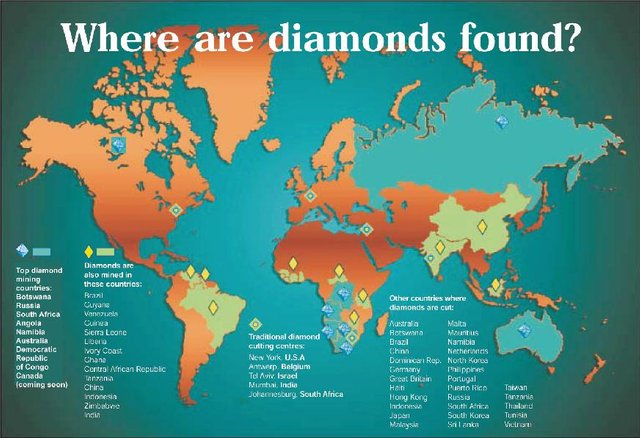
In the late 1950’s diamond mines had been discovered in Siberia, De Beers and the cabal of allies had an issue, they no longer controlled the entire diamond supply. Open competition would surely lead to price fluctuations weakening the carefully constructed confidence the public had in diamonds. Thinking quickly the Soviets were offered the deal of a lifetime granting a single entity the power to control the world's supply of diamonds, only this time the Soviets would be a big player in it. Just like that the Soviets became partners in the global diamond organization. Production massively increased which wouldn't have been to much of a problem except a lot of the production weight were smaller diamonds which were, at the time, much less desirable. A new strategy for “small diamond sales” was outlined putting a lot more stress on the importance of four qualities instead of one. No longer was it just about the size of the actual diamond, now there were three more variations to consider, quality, cut, and coloration. One carat rings were now replacing the pictures of 2 carat rings,giving them the same romantic weight as the previous larger stones. Diamonds were now going to be seen as small objects of perfection, meaning a small perfectly cut diamond could be equally just as beautiful as a large one, if it was the proper stone.
This advertising campaign actually had a profound, unwanted effect on the sale of large diamonds. From the years 1939 to 1976 the average carat of the diamonds being bought went from one carat to 0.28 of a carat which just happened to coincide nicely with the average size of diamonds that were coming out of the Siberian diamond mines. This was great for De Beers, but at the same time the sale of smaller diamonds was growing, the larger stones were becoming viewed as ostentatious over the top displays of mere showboating. While the smaller stones were flying off the shelves like hot cakes, the larger ones were now being offered with as much as a 20% discount on the price attached. Another campaign was launched this time without Frances Gerety. Through a sizable amount of public surveys De Beers came to realize the a man would only part with his earnings in order to buy a diamond ring, not by the value of the ring, aesthetics, or any other quality belonging to the jewelry, but by the expectation that his “gift of love” would truly enhance his standings in the eyes of the woman he loved, and that is what was played on. By 1979 De Beers had more than 2.1$ billion revenue compared with a mere 23$ million in 1939. Forty years and the sales increased nearly a hundredfold, not too shabby at all.
“A degree of control is necessary for the well being of the industry, not because production is excessive or demand is falling, but simply because wide fluctuations in price, which have rightly or wrongly, been accepted as normal in the case of most raw materials, would be destructive of public confidence in the case of a pure luxury such as gem diamonds, of which large stocks are held in the form of jewelry by the general public” Harry Oppenheimer
The General Illusion

The general assumption being that as long as the general public never loses faith in the price stability of diamonds then nervousness will never kick in triggering a panic sell off. If this massive inventory were to ever reach the market no even De Beers could prevent the price of diamonds from tanking. In order for the diamond industry to survive and thrive there needs to be a deep psychological bond keeping individuals from ever parting with their diamonds. N.W. Ayer said “in our opinion old diamonds are in safe hands only when widely dispersed and held by individuals as cherished possessions valued far above their market price”. Sounds a little like “safe hands” belonged to people who were psychologically conditioned to never have the want to sell their diamonds. It was absolutely essential that De Beers maintained at least the illusion of price stability in order to maintain the very diamond industry itself.
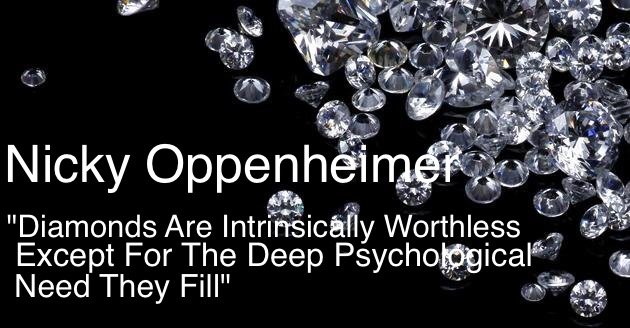
There have been multiple experiments done on holding diamonds as a long term investment, none have turned out well. Two of those experiments were executed by The Dutch Consumer Association as well as the magazine "Money Which?", both lost money on their investments but not for the reason you’d think. It would be generally assumed that the diamonds were sold but for less value than they were purchased for, that's not the case. The diamonds were not even wanted, no jewelry store wants to buy back jewelry, especially diamonds, that’s why they end up in pawn shops or retail firms instead. It doesn't matter if the initial purchase value is 1,000$ or 100,000$, those stores do not want those gems back, a lot would prefer to even refrain from making an offer for they feel it would almost certainly be seen as ridiculously low and insulting. Most would rather offer recommendations to their clients to check out firms that specialize in buying diamonds at retail.
One of the largest of these firms is Empire Diamonds Corporation which sits on the sixty-sixth floor of the Empire State Building in Manhattan. There thousands of diamonds are examined monthly but rarely do they ever turn up a diamond of extraordinary quality. Most diamonds found are either slightly flawed commercial diamonds. It would appear even today most diamond rings are judged based on size and not the quality of the gem itself, completely ignoring the flaws both exposed and hidden in the setting of the ring.It makes it hard to wonder why a common object thieves are shown stealing happen to be diamonds, what happens when they go to sell them, who is buying…
Scam Or Genius Marketing?
In a short Forbes article from 2011 called “There is Only One Way To Make Money” it talks about the difference between a company that will find value, package it, and deliver it as opposed to a company that creates value out of nothing. De Beers did just that from the start, they created value out of nothing. They created and manipulated the very demand we see in existence today craving diamonds by monopolizing the market, appealing to the very societal values, transitioning the people's attitudes over generations, and convincing the people that marriage needed to come along with a beautiful diamond ring. Most companies are the former, but not De Beers. Most are reactive whereas De Beers was proactive, they shifted opinion rather than accommodate it. They literally carved their own path creating fake leadership to lead people into a more sparkly future. Regardless of which side of the fence you sit on, De Beers is an exceptionally interesting case to take from. How they came into fortune dominating an industry that they created and it's still running successfully as I sit here writing this.
Conclusion
Regardless of which side of the fence you sit on, De Beers is an excellent example of a company that came in, marketed an idea and absolutely dominated a market for more then 80 years. They created not only a product but also demand for their product, executed, and literally single handedly built one of the largest industries in existence today.
Additional little note
Now I should add in the past few decades De Beers has lost their monopoly on the diamond industry, no longer do they have sole control over the direction the market will go, in fact they also almost lost control in the 70’s when israelis were manipulating the market in their own way. But as the monopoly was lost all good things come to an end and in 2011 the Oppenheimer family announced its intention to sell the entirety of its 40% stake in De Beers completely releasing the family of any ties to the company. This transaction was worth 5.1$ billion USD and ended the Oppenheimer’s 80 year dynasty ownership over De Beers.
ADDITIONAL INFORMATION
1.http://www.huffingtonpost.com/rohin-dhar/diamonds-are-bullshit_b_3708562.html
2.https://en.wikipedia.org/wiki/De_Beers
3.http://www.businessinsider.com/history-of-de-beers-2011-12?op=1
4.http://blog.hubspot.com/marketing/diamond-de-beers-marketing-campaign#sm.0000udg0lqanif18xja1a8aexb3oi
5.http://www.forbes.com/sites/timmaurer/2011/12/28/there-is-only-one-way-to-make-money/#32f99f0172b9
If you enjoyed my post feel free to check out my Blog and give me a follow.
Any and all comments or suggestions are welcome.
Will, I enjoyed reading your article and the passion and time you put in crafting it. It is a piece which is vert well researched and I hope to see more of that good content !
Thank you very much, I've put effort in before but this was truly my first attempt at an actual researched topic. Took me a while but I was happy how the final product turned out and it got a few votes which is just an awesome bonus. Thank you so much for your comment, it means a lot to me.
This is a really good read into the artificially created diamond industry. Thanks for the effort it took to read the material and then write it all up. I know the effort required. Well done. I have focused on similar topics on my blog over the years.
Something ancillary to this material concerning DeBeers is that it was a DeBeers driver who chauffeured the United Nations Assistant Secretary-General & UN Commissioner for Namibia, Bernt Carlsson, to the airport at Heathrow in London.
Bernt Carlsson never made his scheduled visit to New York. Over Scotland he was blown out of the sky along with 269 other people on Pan Am Flight 103 (Lockerbie).
As the UN Commissioner to Namibia, Bernt Carlsson was getting ready to bring the hammer down on DeBeers over the pillaging of resources in Namibia. DeBeers is extremely well connected to elite intelligence agencies including the Mossad who set up an elaborate operation beforehand and Libya was blamed.
RIP Bernt Carlsson - he was a good man.
Ahhhh no shit! Thats awesome, I've definitely read into De Beers before but nothing as in depth as i had to write this. I have a solid grasp of their 100 year history now, but in all the reading I did not once did I see the name Bernt Carlsson... just shows how hard it is to actually find the facts that are genuinely buried, nothings hidden merely obscured. Ill have to go do a little googling thanks for the name drop man, super appreciated on my end.
Also thanks for noticing the effort that was actually really nice to say, boost of confidence going up! lol
Nice @will-zewe
Shot you an Upvote :)
Keep up the great work @will-zewe
Upvoted
I really enjoyed, thank you.
It is the largest online jewelry store in the world, offering a wide selection of gold and diamond bracelets for women diamond jewelry, as well as advice on choosing stones, the largest online jewelry store in the world, offering a wide selection of gold and diamond jewelry, and consulting services on choosing stones .
Great post, it was interesting to read. I think that this area of the market was indeed created and imposed, but it already exists and gives many people great things. I myself recently considered a gift for my wife on the MomentWish website, excellent products and a good sign of attention